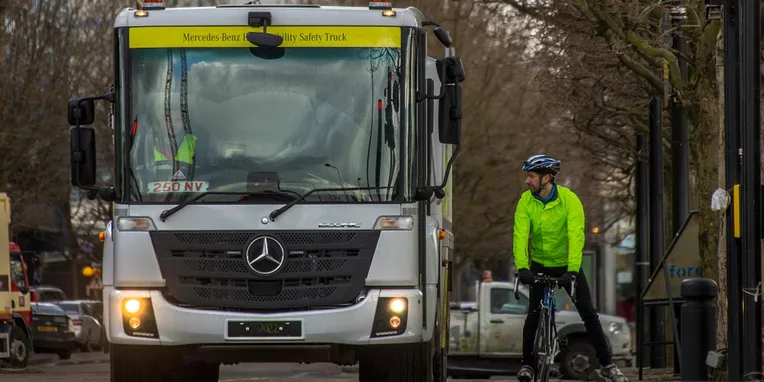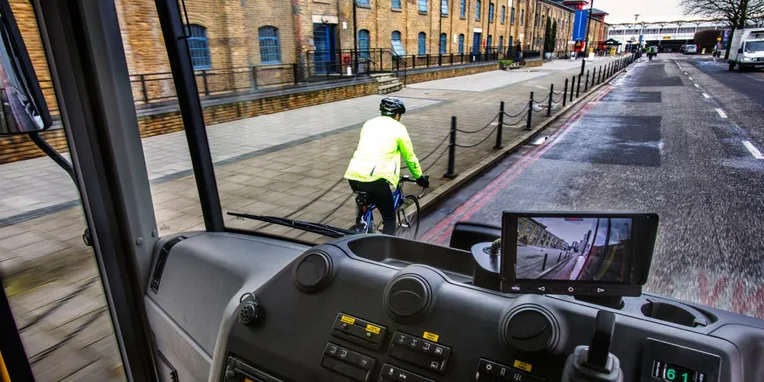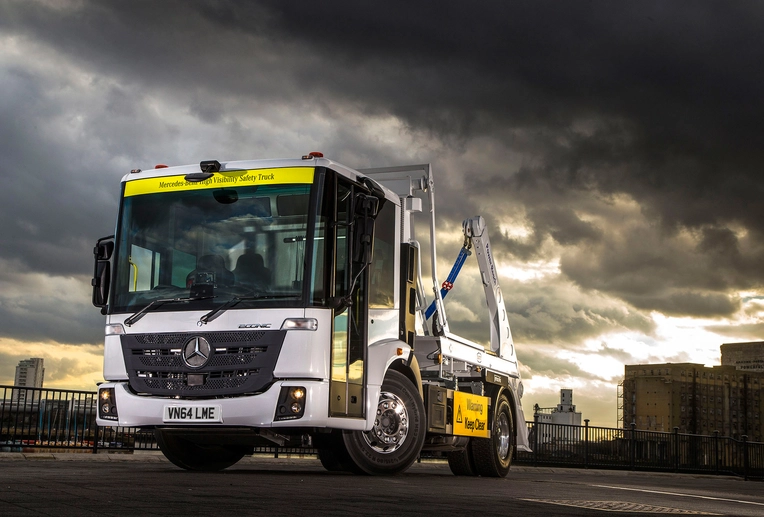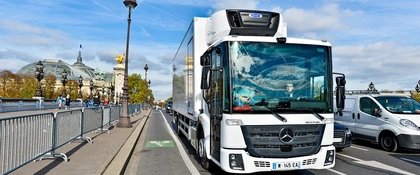London taking measures to increase road safety in construction and logistic transports in the inner city.
While other manufacturers endeavour to develop a truck that is specifically suited for jobs in urban traffic and to establish it in the market, the Mercedes-Benz Econic has been offering a repeatedly proven and application-oriented solution for almost 20 years. The vehicle concept is strictly designed for versatility, ergonomics and safety, which puts the Econic in a class by itself.
With its unique low-entry concept, modern BlueTec 6 engines and first-class Mercedes-Benz quality, the Econic meets all requirements that must be met in inner-city districts with high traffic density: efficiency, safety, environmental friendliness and comfort.
The advantages of the driver's low seating position, supplemented with the extensive panoramic glazing and the mirror system, provide the driver with virtually unrestricted visibility in front of the vehicle and on both sides – a clear advantage in confusing urban traffic with pedestrians and cyclists. In addition, the Econic is easy on drivers and co-drivers. The cab can be reached with just one step. On a busy workday that saves them several metres they don't have to climb up or down.
As a result of the increase in inner-city traffic accidents with cyclists and pedestrians, the Ministry of Transport of the City of London commissioned an independent investigative committee in 2012 to define the causes of accidents and preventive measures. This is really the right place for the Econic.
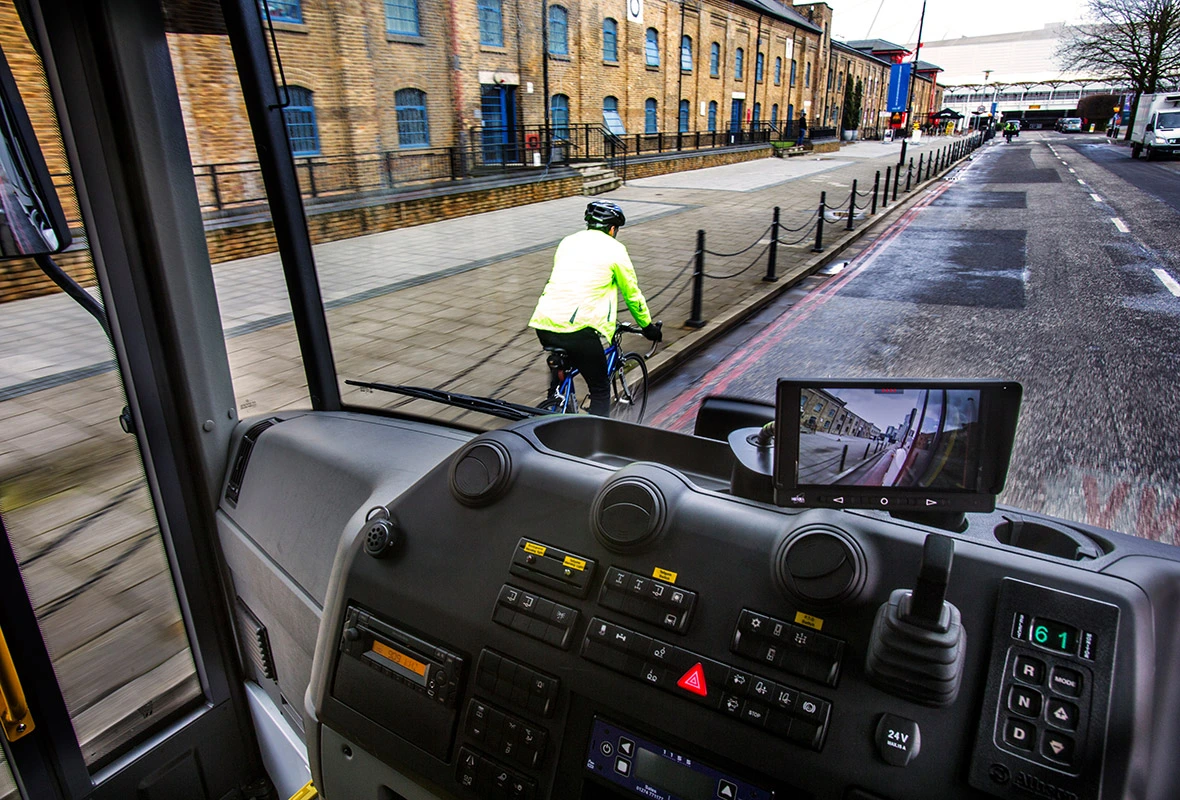
Econic takes the initiative.
The British safety initiative CLOCS is intensifying measures to prevent truck accidents that involve cyclists and pedestrians. In London it showcased the Econic as a safe construction vehicle for inner-city operations.
As a result of the increase inner-city traffic accidents with cyclists and pedestrians, the Ministry of Transport of the City of London commissioned an independent investigative committee in 2012 to define the causes of accidents and preventive measures. In the CLOCS report of findings it became apparent that there was hardly any information about the risks inner-city construction transport presented to road safety and that is was consequently factored in insufficiently in the past. In addition, there were no binding industry standards for road safety in inner-city construction transport.
In response to the findings of the study, the industry with support form the City of London began establishing a culture of safety and taking measures to increase road safety in construction transport. The aim is to use commercial vehicles with maximum visibility and with high ergonomics and safety standards for inner-city construction transport.
Our ground-breaking Direct Vision Standard will be the first of its kind in the world, directly addressing the issue of lethal driver blind-spots.
Sadiq Khan, Major, London

